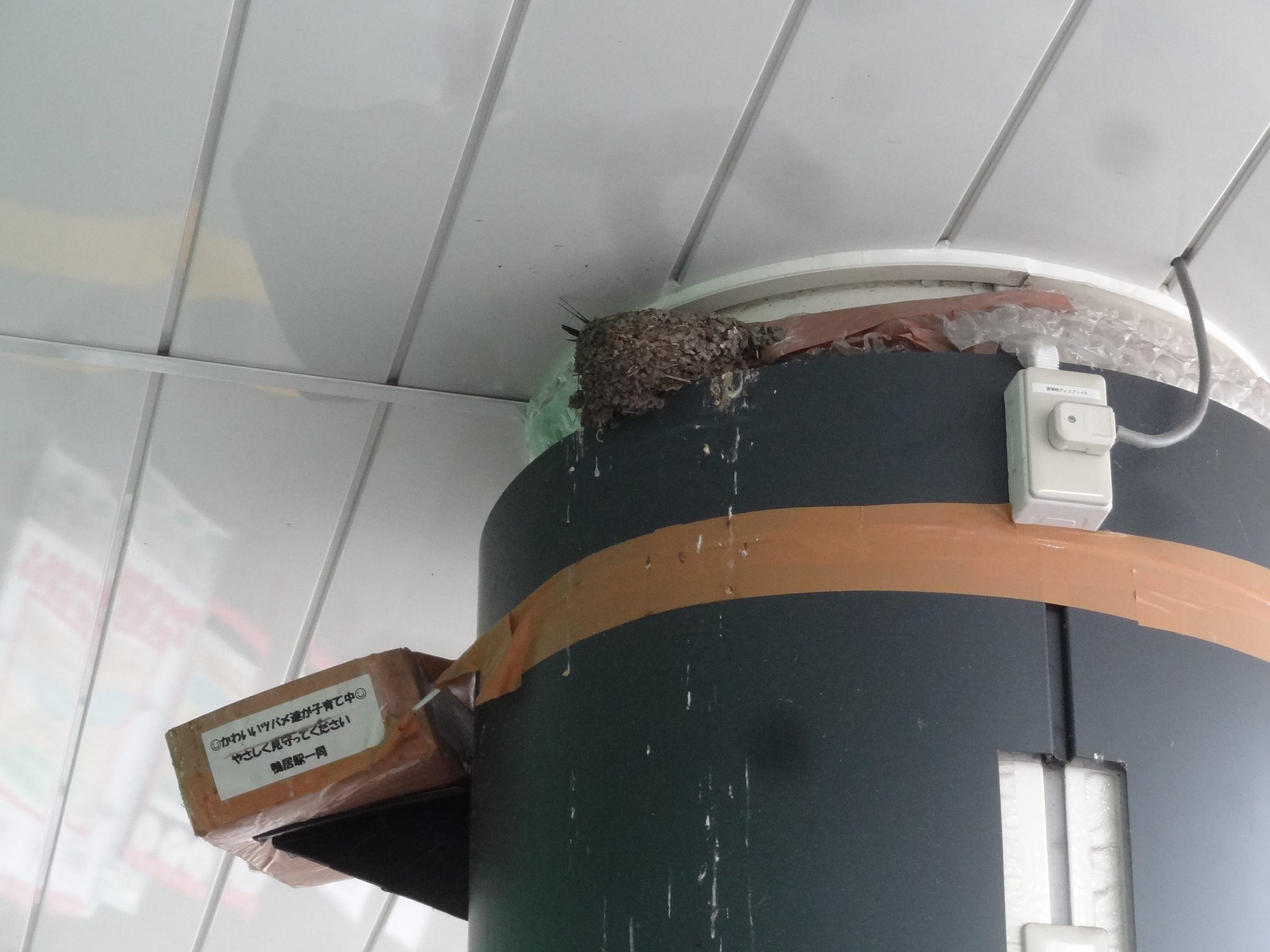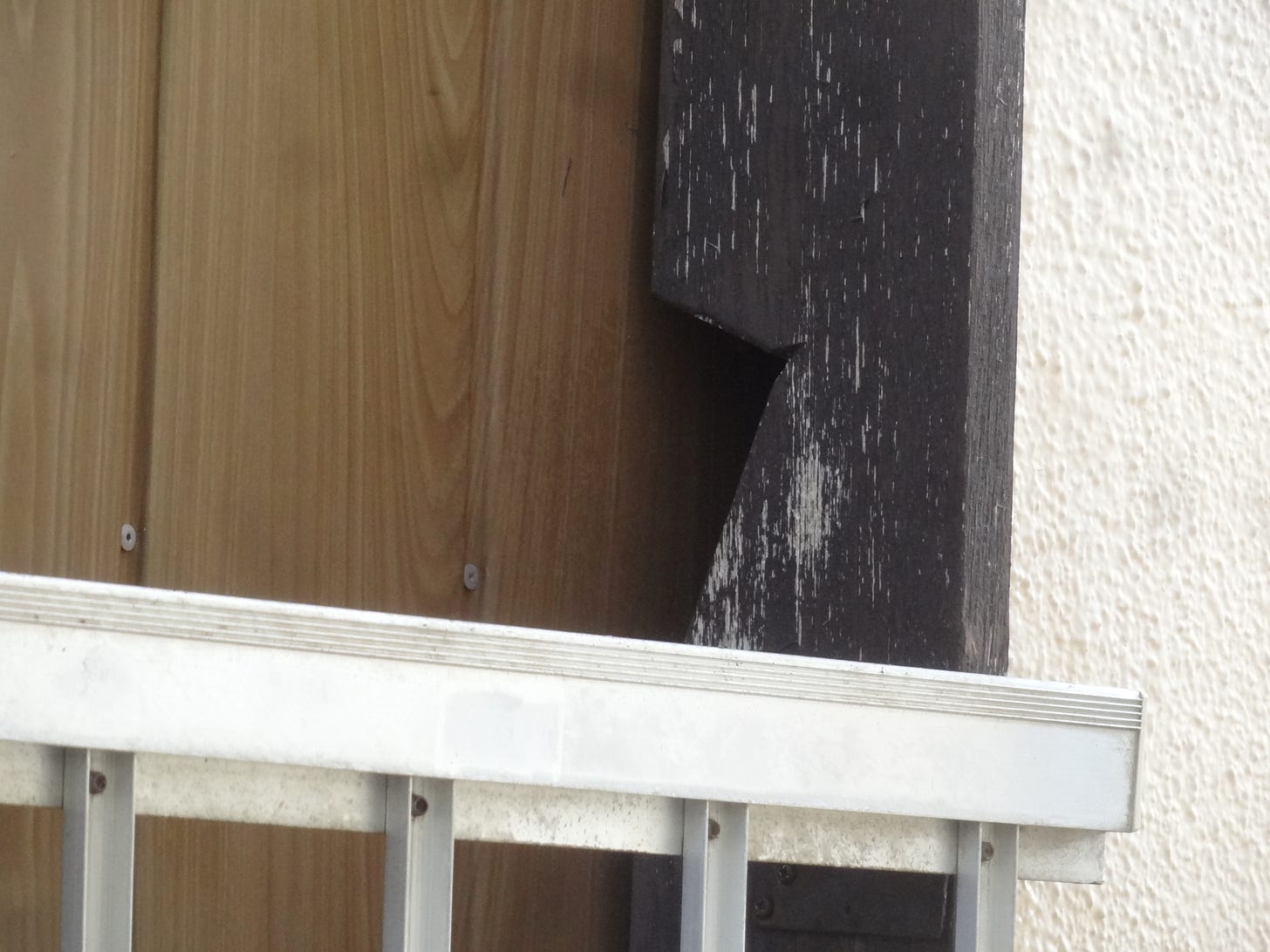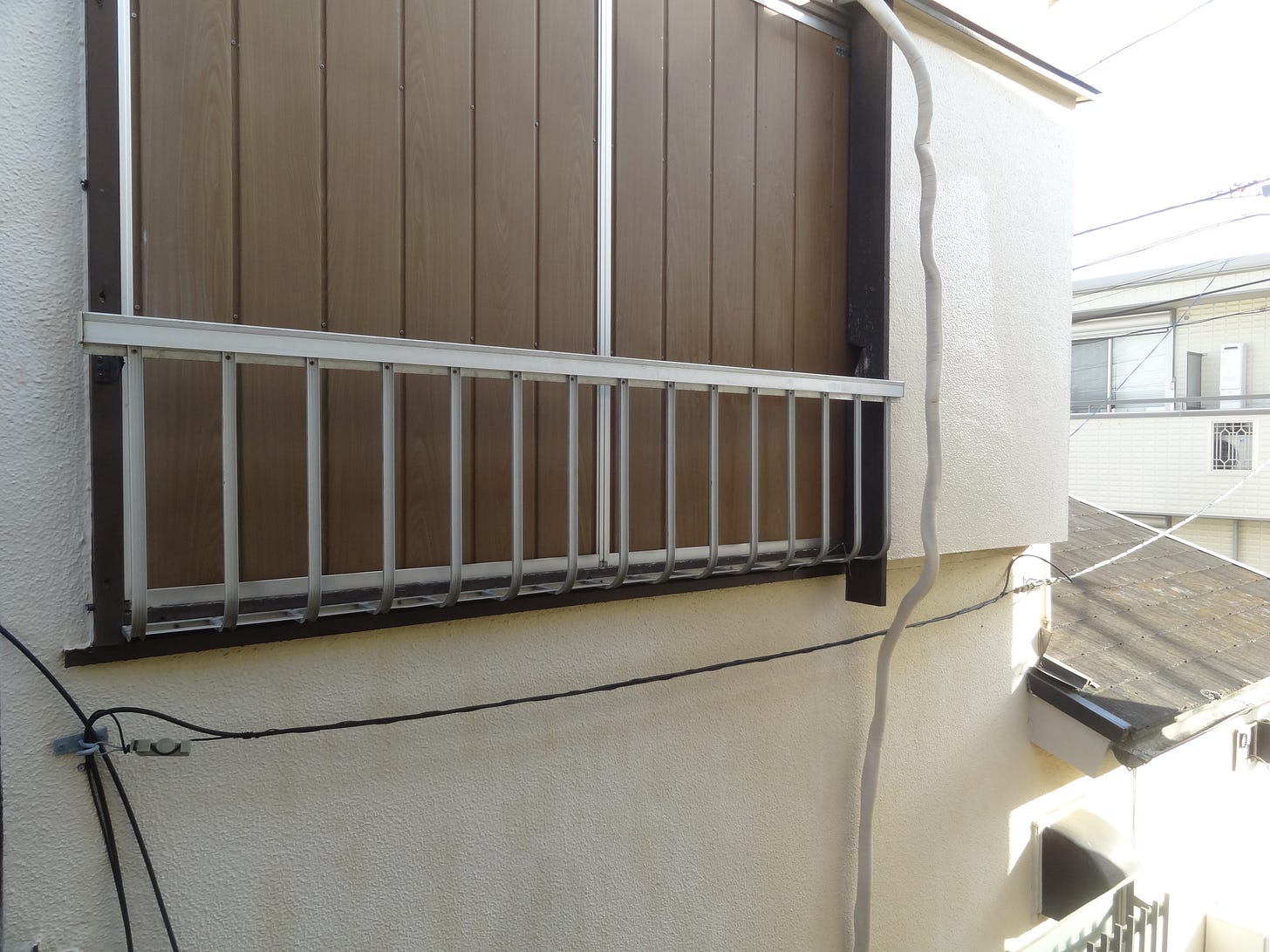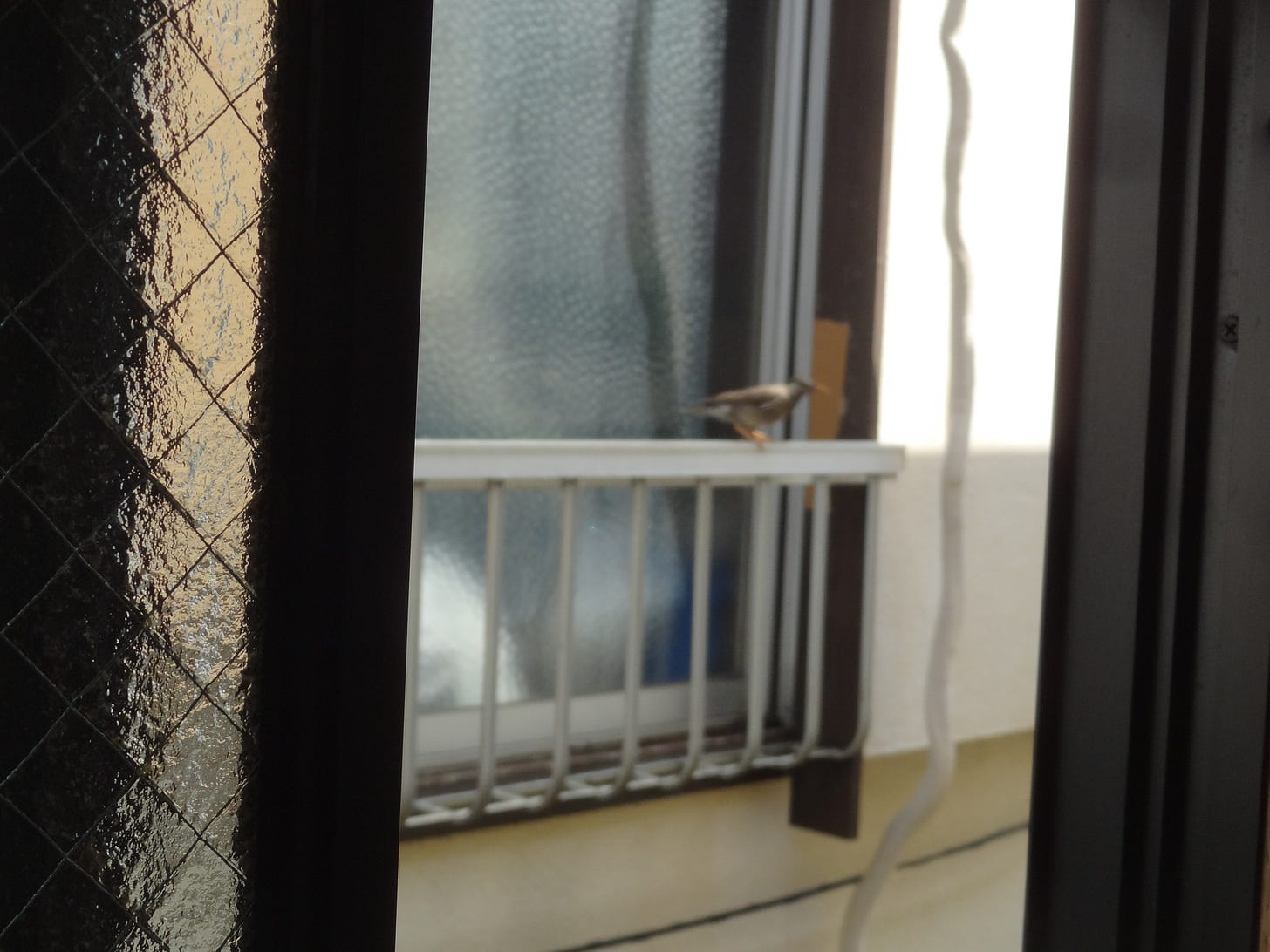Dear readers, this story is neither about a condominium nor about races (it’s more about species) but please read on.
The quasi-countryside suburb where I live is the home of different kinds of birds, among them ducks, crows, swallows and kingfishers. Many of them are used to the human presence and have no problems nesting close to us. Like these swallows who live inside a railway station.
Then there are the white-cheeked starlings, or mukudori, as they are called in Japan.
According to the Wikipedia, they are 24 cm in length. The adult male is mainly dark grey-brown with a paler belly. The head is blackish with whitish cheeks and forehead. The legs are pale orange and the bill is orange with a black tip. Adult females are similar to the males but paler and duller.
I like those creatures. They may not be particularly good-looking of graceful, but I like their shape and orange bill. I even like their shrill, harsh, creaking calls.
They are useful to farmers because they feed mainly on insects and earthworms. On the other hand, they poop everywhere and carry diseases and bacteria that can harm both humans and pets.
Some time ago, I noticed that a couple of starlings had taken possession of a second-floor window in an old condo near my house. These old buildings have sliding shutters, and the window frames come with an opening (see above) to make opening and shutting them easier.
The space between the window and the outer wall is an ideal home for starlings. It’s warm, dry, and prevents predators (e.g. crows) from bothering them and stealing their eggs.
Every time I passed in front of that condo, I heard the just-born chicks frantically calling for food while their parents went out hunting for bugs. They made a mighty racket, but I found it funny and even endearing. probably because I lived far enough not to be disturbed all day long. After about three weeks, the whole family moved, leaving behind a mess.
Then, three days ago, my wife was horrified to see that a different couple had discovered the same kind of shelter, only this time it was on the second floor of our neighbor’s house.
In Japan, living space is scarce (unless you live in Chiba) and only 160 cm separate our houses. When the weather is good enough, we leave all the windows on that side open, and my wife - who has many allergies - began to contemplate the consequences of having a family of hard-shitting, disease-carrying birds at such a close range.
Granted, after three weeks the starlings would leave, but the army of ticks that typically share their nest would likely remain.
At this point you will probably think, well, where’s the problem? Just talk to your neighbor and devise a strategy against the trespassers. Unfortunately, it wasn’t so simple.
My neighbors - let’s call them the Tanakas - are a 70-something couple. We have always had an excellent relationship with them, and because they don’t have children, they even became honorary grandparents to our two sons.
However, the wife has been ill for years and is currently bedridden. She cannot walk, needs a wheelchair the rare times she ventures outdoors, and goes to the hospitals two or three times a week to get treatment.
Mr. Tanaka, until last year, was quite active. A quiet, affable gentleman, he always wore smart clothes and liked to engage us in small talk.
Unfortunately, the combination of aging and the stress of looking after his wife finally got the better of him and in the last six months, he has quickly deteriorated to the point of becoming nearly senile.
So, when my wife, three days ago, approached him with our problem, he first didn’t get it. Then, slowly, he said that they didn’t use the second floor anymore (true, the shutters are always closed) so it wasn’t a big problem (for them). He concluded with the classic expression, shikata ga nai ne (there’s nothing we can do about it).
The starlings, in the meantime, had started building their nest (and shitting around). Not only that, now they had multiplied, as if the original couple had decided to share or sublet their pad.
A battle of sorts ensued between us and the feathered invaders. We soon realized that these fellas were clever, cunning and incredibly stubborn. We mounted guard to the window for as long as we could, but we had our jobs and other things to do, and they only had to patiently wait for the chance to resume their nest-building.
Time was running out: once the nest was ready and the female had laid her eggs, we could do nothing to kick them out.
Then my wife had the idea of calling the local welfare officer who had been taking care of the Tanakas. Yesterday, the two of them and another lady marched again to our neighbors’ place and finally got through to the husband's increasingly foggy mind.
Having obtained access to their house, they climbed up to the second floor, opened the window and the shutter, cleaned up the mess, and blocked the access to the nest with strong tape.
When the starlings returned, they couldn’t understand what had happened. The male examined every inch of the window, trying to find in vain a way in.
It was a sad scene.
I felt for them, but unfortunately, we couldn’t do otherwise. I hope they will find a new home somewhere else.
Have you have had problems with animals, birds or bugs of any shape and size? Please let me know.













Poor starlings! The anguish of the mother! What about moving their nest to the nearest treetop?